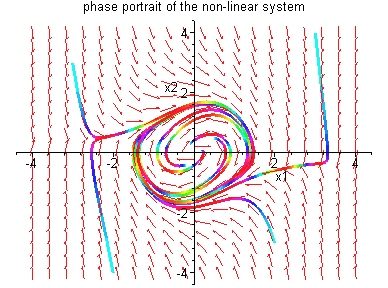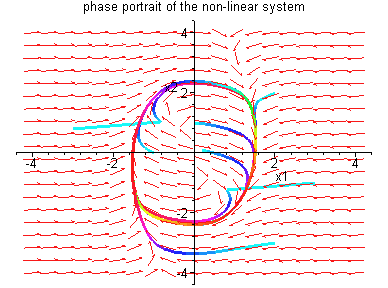| |
(4.11) |
We discuss, in this section, the existence of periodic
solutions. This problem is much more complicated than that
of the existence of constant solutions. We only restrict
our attention to 2-dimensional systems of the form
Let's start with an example as motivation.
Example 4.3.1: Consider the nonlinear system

It thus follows that the annulus

Lemma 4.3.1: Let M be a positively
invariant compact set of (4.11). Then for any
![]() ,
we have
,
we have
Proof: (omitted)
Now, we are in a position to state the following Poincaré-Bendixson Theorem.
Theorem 4.3.1: Let
![]() ,
,
![]() is open. Let
is open. Let
![]() and
and
![]() be a nonempty
be a nonempty
![]() -limit set of (4.11). If
-limit set of (4.11). If
Proof: (omitted)
Remark: For a more detailed proof, see Perko, p.
226-231 or Hirsch & Smale, p. 242-249.
Corollary 4.3.1: Let S be a positively
invariant compact set of (4.11). Then S contains
an equilibrium point or a periodic solution of (4.11).
Example 4.3.2: Consider the nonlinear system





It should be noted that, in both Example 4.3.1 and 4.3.2, the unique equilibrium point (0,0) is enclosed by the periodic solution. This observation turns out to be true in general.
Theorem 4.3.2: The orbit ![]() of a
periodic solution must enclose at least one equilibrium
point.
of a
periodic solution must enclose at least one equilibrium
point.
Proof: (omitted)
Corollary 4.3.2: Let
![]() be
an open and simply connected set and
be
an open and simply connected set and
![]() .
If D contains no equilibrium points of
(4.11), then there is no periodic solutions of (4.11)
lying entirely in
.
If D contains no equilibrium points of
(4.11), then there is no periodic solutions of (4.11)
lying entirely in ![]() .
.